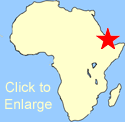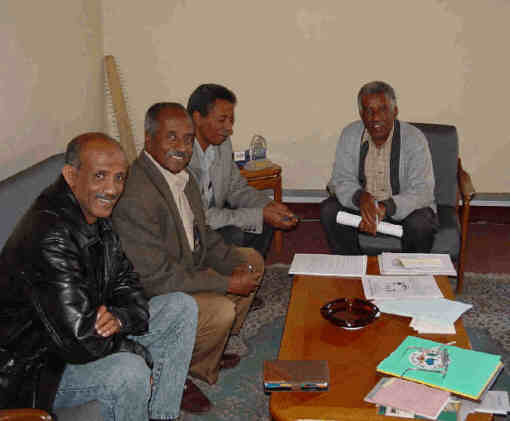|
Why Eritrea? The Project Project History Curriculum Examples PressI Math/Science Nucleus and Eritrea The success of the Math/Science Nucleus curriculum has attracted the interest of international educators including Eritrean Minister of Education, Mr. Osman Saleh. Mr. Saleh, sought out the guidance of the Math/Science Nucleus with an introduction from Teclu Tesfazghi, a former Board Member of the Math/Science Nucleus. They visited Maloney Elementary School in Fremont which incorporates the Math/Science Nucleus techniques of integrating technology with hands-on science. Mr. Saleh was impressed. The resulting dialogue led to the formation of this project. The main mission of this project is to assist Eritrea into the 21st century using Internet-based education and technologies, with innovative science training techniques. Eritrean Science Project
One of the first tasks was to develop an understanding of the Educational System of Eritrea. Learning about the system determine how the curriculum can be customized. Developing a model in which to test took several trips and discussions to determine how the curriculum could be customized. We also looked at how technology could help bring a rapid transformation. Designing new curriculum that could then be used was developed. This is when the problems of a developing nation slowly show cultural difference. Implementation of a curriculum is even more difficult. You have to look at whether funds are available, teacher training, and whether there is an infrastructure to continue the work.
|

 The Eritrea Science Project is a long-term project established by the Ministry of Education (MOE) of the Government of Eritrea to reform the countryís science and math curriculum. The Management Team of the MOE who have been involved with the Eritrea Science Project (ESP) are shown at the left and includes (left to right) Tesfamichael Gerahtu (Director of Curriculum), Osman Saleh (Minister of Education), Petros Hailemariam, (Director of Research and Human Resources Development), and Abraham Tecle, (Assistant Director of Research and Human Resources Development). Not pictured is Mebrahtu Gilogabir (Director of Asmara Teacher Training Institute).
The Eritrea Science Project is a long-term project established by the Ministry of Education (MOE) of the Government of Eritrea to reform the countryís science and math curriculum. The Management Team of the MOE who have been involved with the Eritrea Science Project (ESP) are shown at the left and includes (left to right) Tesfamichael Gerahtu (Director of Curriculum), Osman Saleh (Minister of Education), Petros Hailemariam, (Director of Research and Human Resources Development), and Abraham Tecle, (Assistant Director of Research and Human Resources Development). Not pictured is Mebrahtu Gilogabir (Director of Asmara Teacher Training Institute).